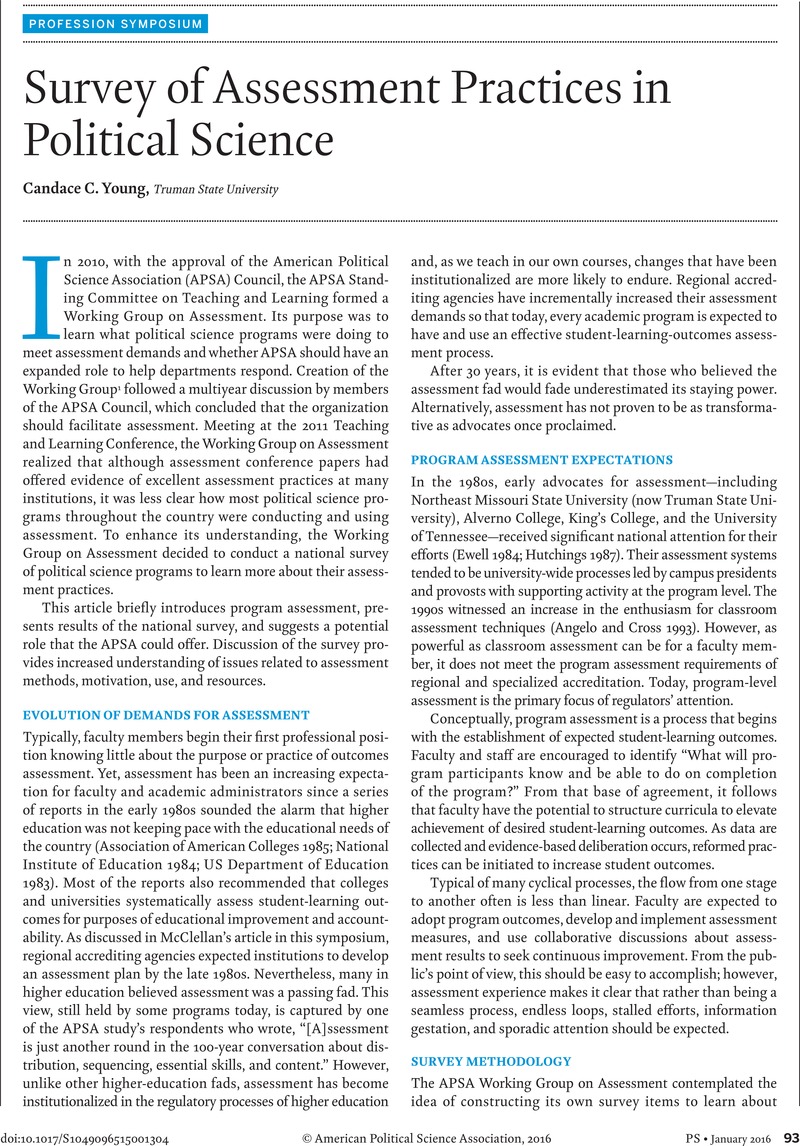Crossref Citations
This article has been cited by the following publications. This list is generated based on data provided by Crossref.
Safronova, Margarita
Miller, Caleb
and
Kuehl, Colin
2019.
“When are We Ever Going to Have to Use This?”: Discussing Programmatic Learning Outcomes in the Classroom.
Journal of Political Science Education,
Vol. 15,
Issue. 4,
p.
421.
McClellan, E. Fletcher
2021.
Outcomes Assessment in Higher Education as a Scientific/Intellectual Movement: Implications for Political Science.
Journal of Political Science Education,
Vol. 17,
Issue. sup1,
p.
717.
Hinckley, Robert A.
McGuire, Jack
and
Danforth, Tara L.
2021.
Improving Student Success in the Capstone Seminar: The Importance of a Prior Research Intensive Experience.
Journal of Political Science Education,
Vol. 17,
Issue. 1,
p.
20.
McClellan, E. Fletcher
Kopko, Kyle C.
and
Hafler, Amanda
2023.
Giving It the Old College Try: Academic Departments and Undergraduate Curriculum Change in Political Science, 2009–2019.
Journal of Political Science Education,
Vol. 19,
Issue. 4,
p.
580.
Phillips, John LaForest
2024.
Raising the Stakes on a Political Science Major Field Test: Evidence From a New Capstone Course.
Journal of Political Science Education,
p.
1.





